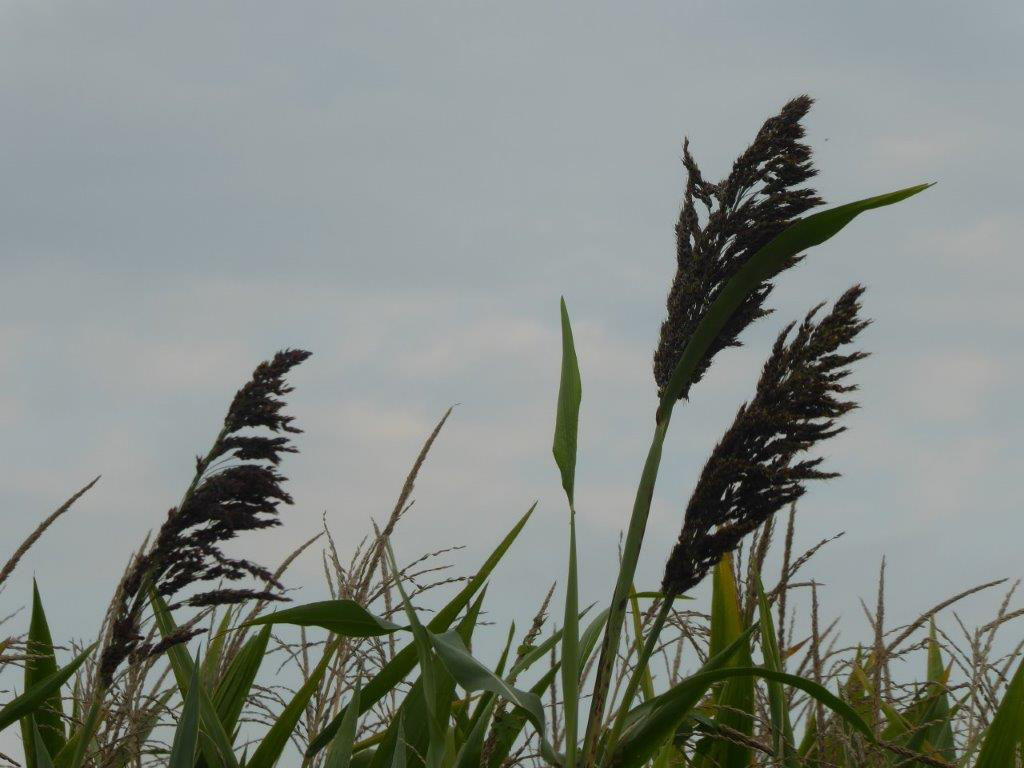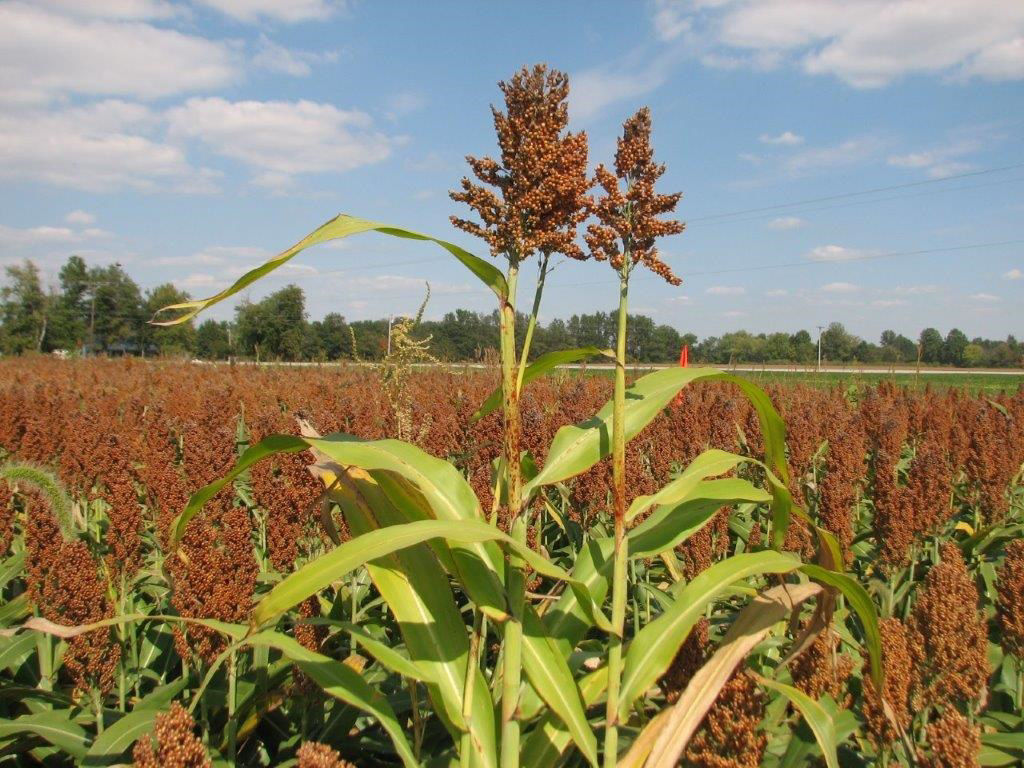Shattercane Identification and Management
August 3, 2023
Shattercane is an annual weed that is an off-type of grain and forage sorghums. Shattercane plant development, prior to grain head formation, resembles the plant structure of grain sorghum and corn and can reach more than 6 feet tall (Figure 1). The leaf blades are usually hairless except for the leaf base. Additionally, the leaves are flat, one to two feet long, and one to two inches wide. Leaf sheaths are often covered with a waxy, whitish film or bloom, and leaves have a large membranous ligule. Stalks are robust and can be one inch in diameter at maturity. The seed head is a large open panicle with rounded seed that are black to maroon at maturity and typically lean to one side of the panicle (Figure 2). When the seeds are sufficiently dry, they easily drop from the panicle. Since the seeds are hard, new infestations can occur in near or far away fields as they can pass through wildlife digestive systems.
Grain sorghum fields may contain off-types that either resemble grain sorghum, shattercane, or johnsongrass (Figure 3). The grain heads of true grain sorghum off-types resemble the grain heads of grain sorghum but the plants are usually taller as in Figure 3. Johnsongrass can be differentiated by the seed head that appears like a Christmas tree and long, slender rhizomes. Another off-type is sorghum-almum which is a cross between grain sorghum and johnsongrass and has short thick rhizomes and a drooping Christmas tree type head.



Prevention is the easiest way to control shattercane. If you are planting small grain crops, make sure it is certified weed-free seed. Other options after the fact include tillage, crop rotation, and manual pulling or cutting, and effective herbicides. Shattercane can emerge from 1.5 inches deep; therefore, a soil applied herbicide may not be effective. A post emergence application is usually needed for best control. Herbicide recommendations include nicosulfuron, or a glyphosate herbicide product in glyphosate resistant corn, a Group 1 herbicide, or a glyphosate product in glyphosate resistant soybeans.
Lance Porter
Agronomist
Sources:
Hartzler, B. and Anderson, M. Shattercane. Integrated Crop Management. Iowa State Extension and Outreach. Iowa State University. https://crops.extension.iastate.edu/encyclopedia/shattercane.
Lingenfelter, D., Wallace, J., VanGessel, M., Vollmer, K., Besancon, T., Flessner, M., Singh, V., and Chandran, R. 2022. Mid-Atlantic weed control guide. Essentials for agronomic crops. AGRS-136. Penn State Extension in cooperation with the Universities of Delaware, Maryland, Rutgers, Virginia Tech, and West Virginia. The Pennsylvania State University.
Web sources verified 6/20/23. 1110_274488
Seed Brands & Traits
Crop Protection
Disclaimer
Always read and follow pesticide label directions, insect resistance management requirements (where applicable), and grain marketing and all other stewardship practices.
©2024 Bayer Group. All rights reserved.